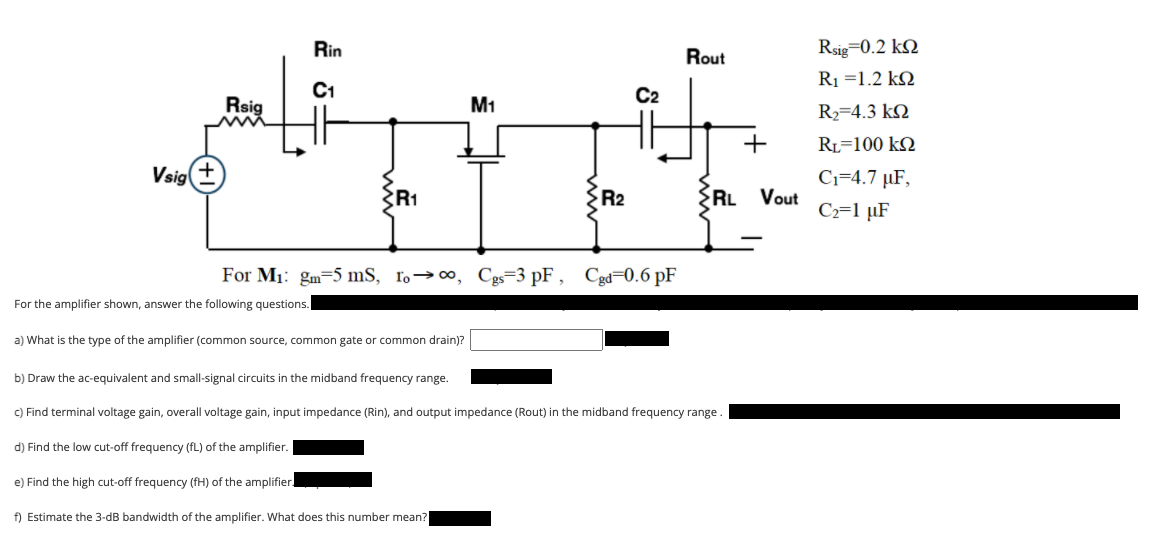R1 =1.2 kQ C1 C2 Rsig M1 R2=4.3 kQ RL=100 k2 Vsig Ci=4.7 µF, R1 R2 RL Vout C=1 µF For M1: gm=5 mS, ro→∞, Cgs=3 pF , Cgd¬0.6 pF For the amplifier shown, answer the following questions. a) What is the type of the amplifier (common source, common gate or common drain)? p) Draw the ac-equivalent and small-signal circuits in the midband frequency range. ) Find terminal voltage gain, overall voltage gain, input impedance (Rin), and output impedance (Rout) in the midband frequency range
Power Amplifier
The power amplifier is an electronic amplifier designed to maximize the signal strength of a given input. The input signal strength is enhanced to a high enough level to drive output devices such as speakers, headphones, RF (Radio frequency) transmitters, etc. Unlike voltage / current amplifiers, the power amplifier is designed to drive core loads directly and is used as a storage block in the amplifier series.
Maximum Efficiency Criterion
In every field of engineering, there is a tremendous use of the machine and all those machines are equipped for their popular work efficiency so it very much important for operation engineers to monitor the efficiency of the machine, planning engineers to check out the efficiency of the machine before installing the machine and design engineers to design machine for higher efficiency than and then the utility will procure their products that will ultimately lead to profit and loss of the company. It indicates the importance of efficiency right from the initial stage as manufacturing units, intermediate stage as planning coordinators, and end-users stage as a utility.
Need some help with this amplifier question

Step by step
Solved in 3 steps with 3 images









